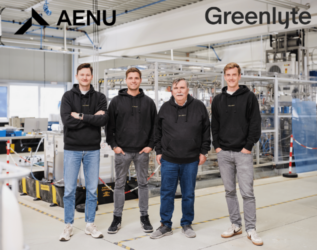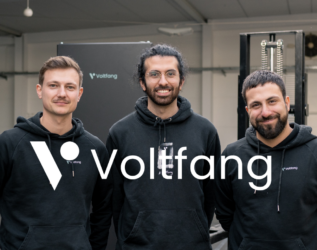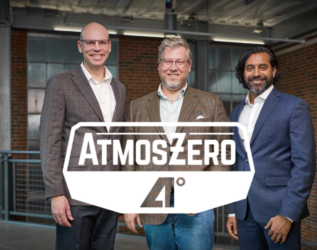Monta – Rewiring EV Charging into Climate Infrastructure

PART I — THE BLIND SPOT OF THE ENERGY TRANSITION
Electrification is central to decarbonizing transport — but charging infrastructure remains a structural bottleneck. While EV adoption accelerates across Europe and the U.S., fragmented value chains, outdated software layers, and grid constraints stall progress.
Most solutions focus on physical deployment. Few address the system-level challenge: how to integrate charging as flexible, intelligent climate infrastructure — not just a mobility feature.
Without a unified digital backbone that serves fleets, CPOs, site owners, and energy systems alike, charging infrastructure risks becoming the weak link of the energy transition.
Monta addresses this gap: rewiring EV charging as climate infrastructure.
PART II — THE SYSTEMIC FUNCTION OF MONTA
Monta is not a hardware company. It’s not a pure mobility platform either.
Its role is foundational: providing a software-first operating system that connects, optimizes, and scales EV charging across Europe and beyond.
Monta integrates key functions into one modular platform:
- Seamless operation of AC and DC charge points across use cases
- Smart features like PowerBank, Smart Queue, and Virtual Solar
- Dynamic pricing, billing, wallet systems and CRM/ERP integration
The result is a flexible infrastructure stack that improves utilization, increases uptime, and integrates EV charging into distributed energy systems — across homes, businesses, and fleets.
This is Climate Infrastructure-as-a-Platform: turning EV charging from a fragmented add-on into a backbone of the clean energy transition.
PART III — SYSTEMIC IMPACT FRAMEWORK (SIF) IN ACTION
AENU’s B Corp-certified Systemic Impact Framework (SIF) evaluates whether a company transforms the system it operates in — not just whether it emits less. Applied to Monta, the framework shows systemic leverage across six dimensions:
The first four build Impact Integrity:
Founder Intentionality
Monta was founded to remove friction from the energy transition. Its mission “Empowering people and businesses to go (and stay!) electric” is not just marketing. The team designed Monta to serve complexity rather than simplify it: with full transparency, modular architecture, and long-term adaptability across stakeholders.
Theory of Change
Monta interconnects the fragmented EV charging ecosystem: from hardware providers and installers to fleet managers, site owners, and energy providers. Its platform improves charge point utilization, grid responsiveness, and system uptime — directly addressing the IEA’s call for distributed EV charging as a key enabler of net-zero energy transitions.
Interlock
Monta’s revenue grows with platform adoption: per charge point, per session, and per software tier. With over 200,000 charge points powered and more than 2.5M charges across Europe and the US already, every additional charging session contributes to CO₂ displacement, grid stability, and reduced infrastructure overbuild. Tying Monta’s financial success directly to its system-level impact.
Additionality
Monta is a horizontal enabler: not a single-layer product but a full-stack solution adaptable across AC/DC types, markets, and user profiles. Unlike legacy providers, Monta offers tailored portals, white-label modules, and integrations with ERP, CRM, and energy systems. This modularity enables smart grid participation, optimizes infrastructure, and avoids hardware lock-in.
Impact Potential is evaluated across two dimensions:
Unit Impact
Monta measures the impact of each session using backend telemetry: kWh charged, grid mix by country, feature adoption, and roaming share. This allows real-time quantification of avoided emissions, improved infrastructure use, and increased interoperability.
Impact Scale
The Unit Impact is scaled using mWh charged through Montas services and EV km driven reflecting Monta’s broader systemic influence. We track total tons of CO₂ reduced, mWh charged and active charge points. Just in 2024 Monta has contributed to the reduction of over 162000 tons of CO₂, with every new session accelerating decarbonization. While Monta’s core focus is on optimizing EV charging, its larger impact lies in enabling an electrified transport ecosystem – supporting global energy goals and indirectly displacing substantial fossil fuel demand.
AENU tracks impact via platform data: from total CO₂ displacement to peak-load responsiveness. Monta’s long-term systemic potential lies in stabilizing distributed energy infrastructure across millions of daily charging sessions.
PART IV — EXECUTION PROGRESS TO DATE
Monta has demonstrated rapid execution and platform scalability:
- Active across 13 markets including Denmark, Germany, UK, France, Netherlands, Sweden, Norway, and Spain
- 2.1M+ monthly sessions and 200k+ live charge points
- Roaming protocols integrated across Europe
- Backend enables feature adoption like PowerBank and Smart Queue
- Strategic partnerships with energy companies, fleet operators, and installers
- Recognized as a climate-first SaaS category leader
Each milestone validates Monta’s readiness to operate at grid scale — not just as a product, but as climate-critical infrastructure.
PART V — WHY AENU BACKS MONTA
At AENU, we invest in companies that rewire the system — not just reduce emissions at the margin. Monta exemplifies this:
- Founder mission rooted in climate-first digital infrastructure
- Systemic change across mobility, grid, and energy systems
- Business model directly interlocked with decarbonization outcomes
- Platform-scale execution across Europe
- Fully embedded in AENU’s Systemic Impact Framework
Monta is not a mobility service. It is the operating system for EV charging as climate infrastructure — ready to scale across the energy transition.











